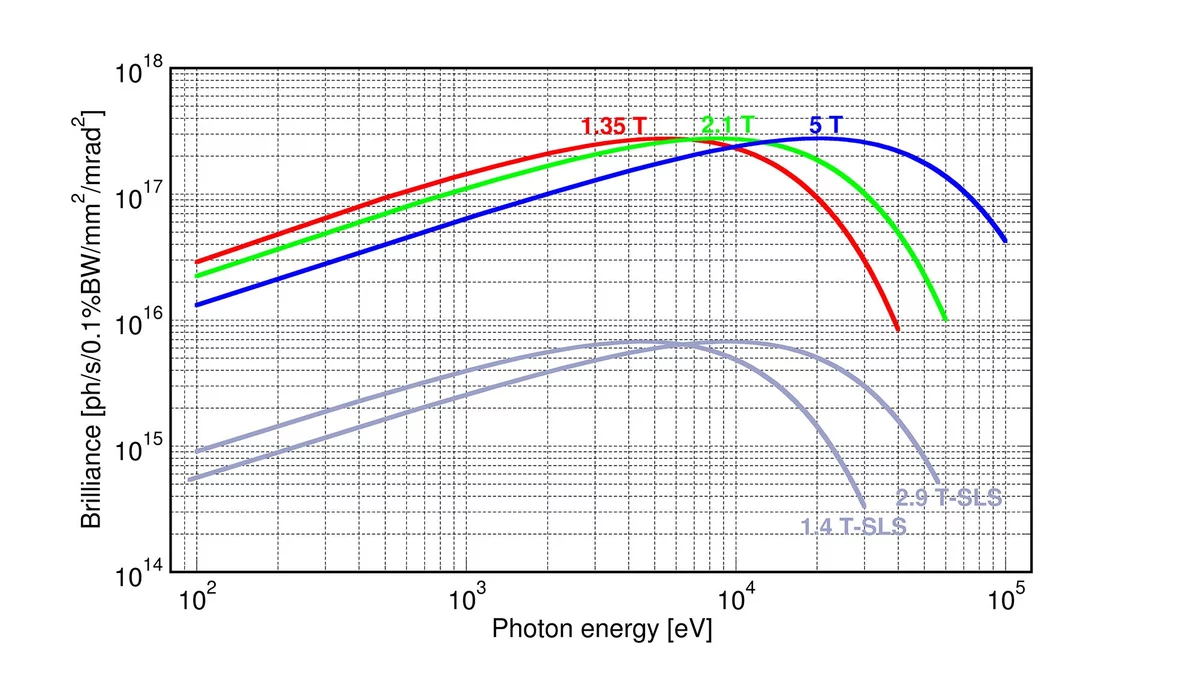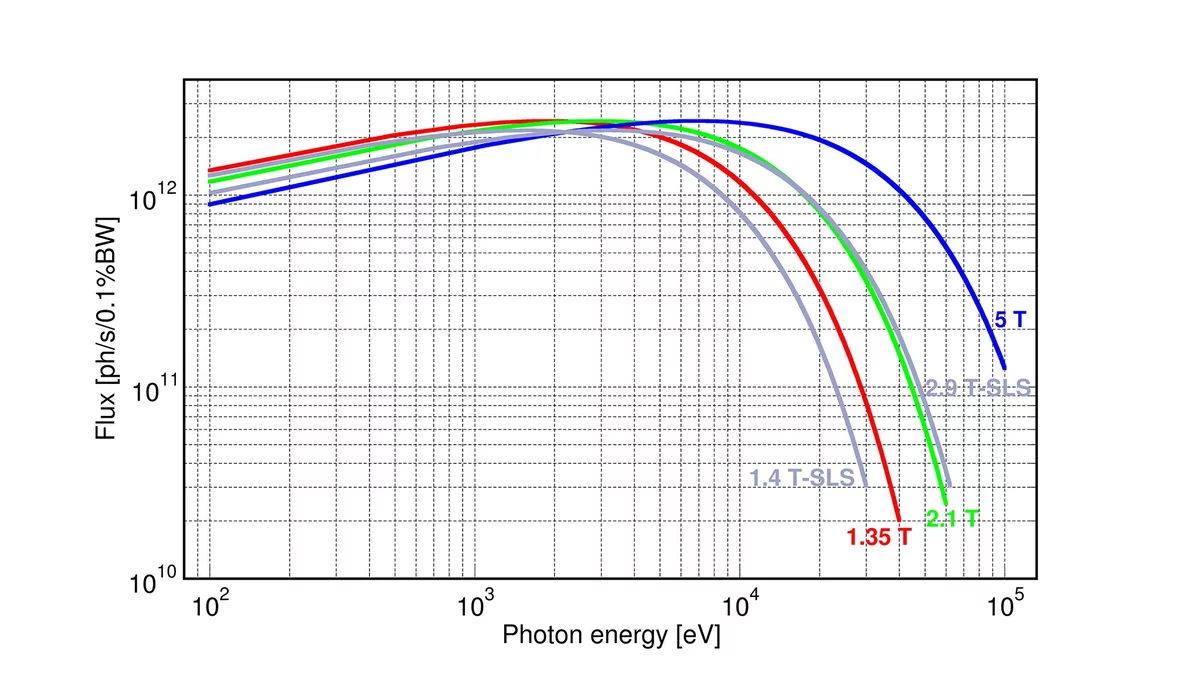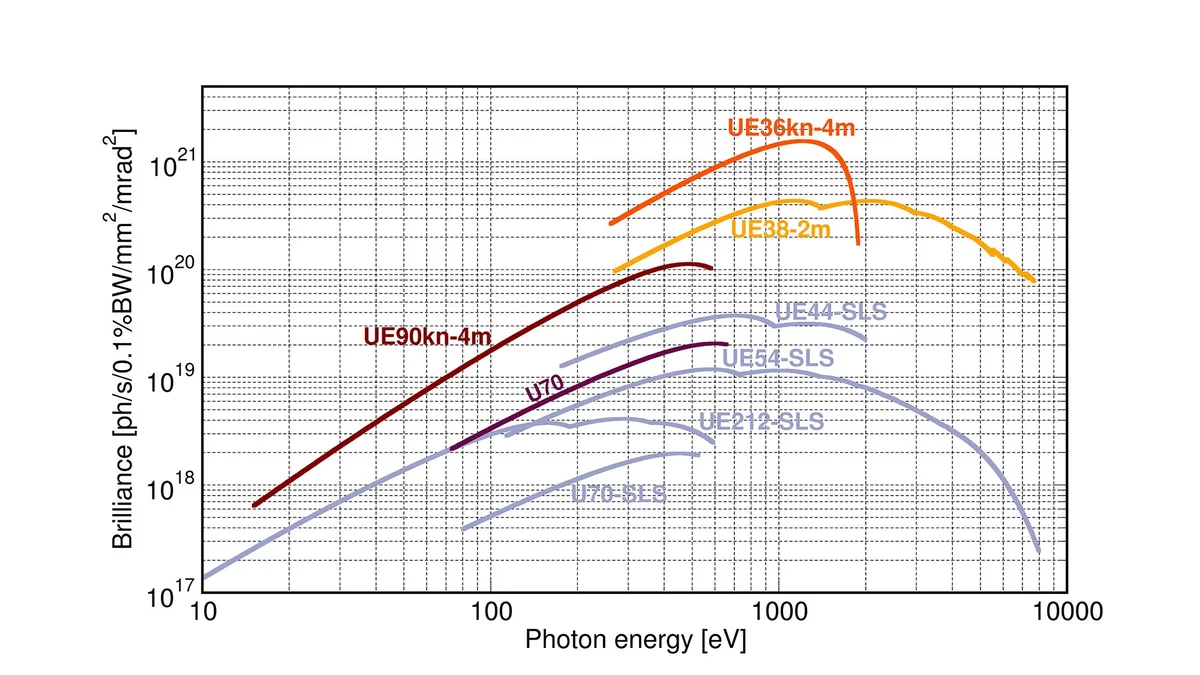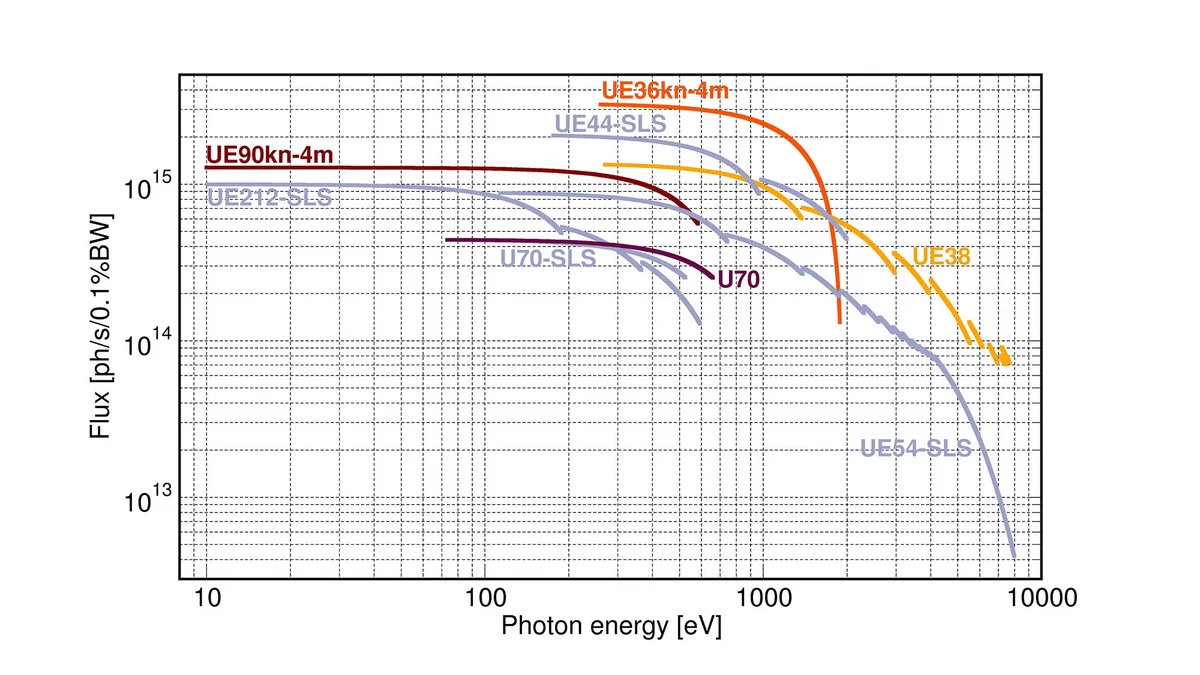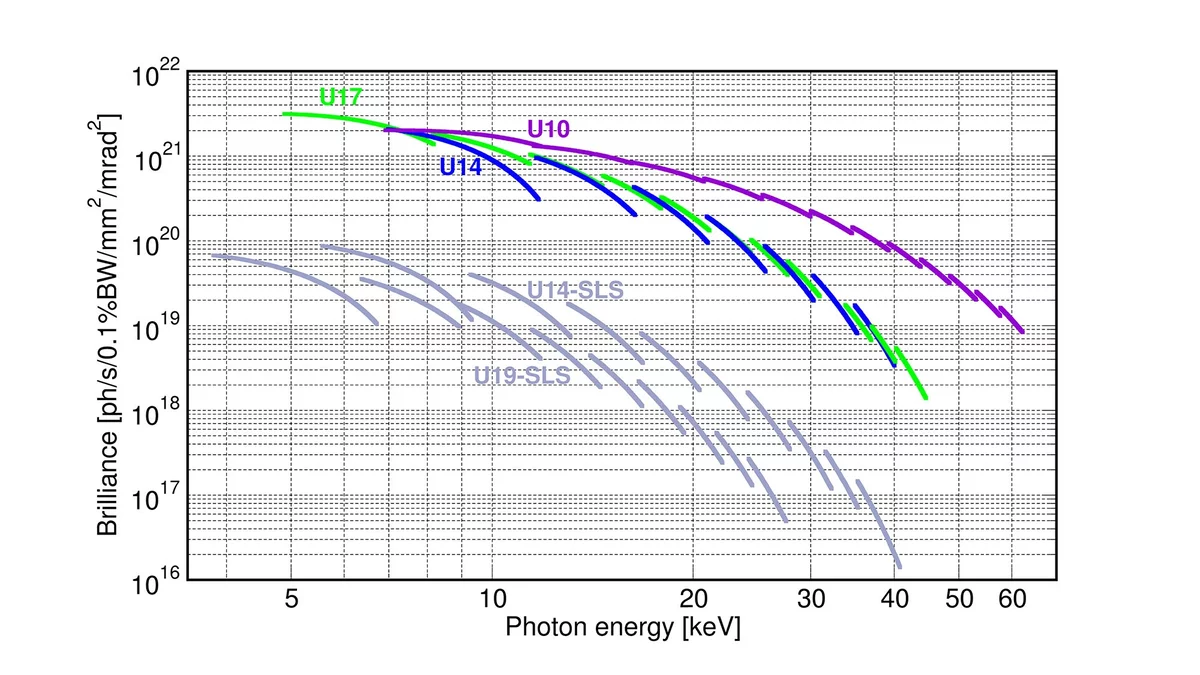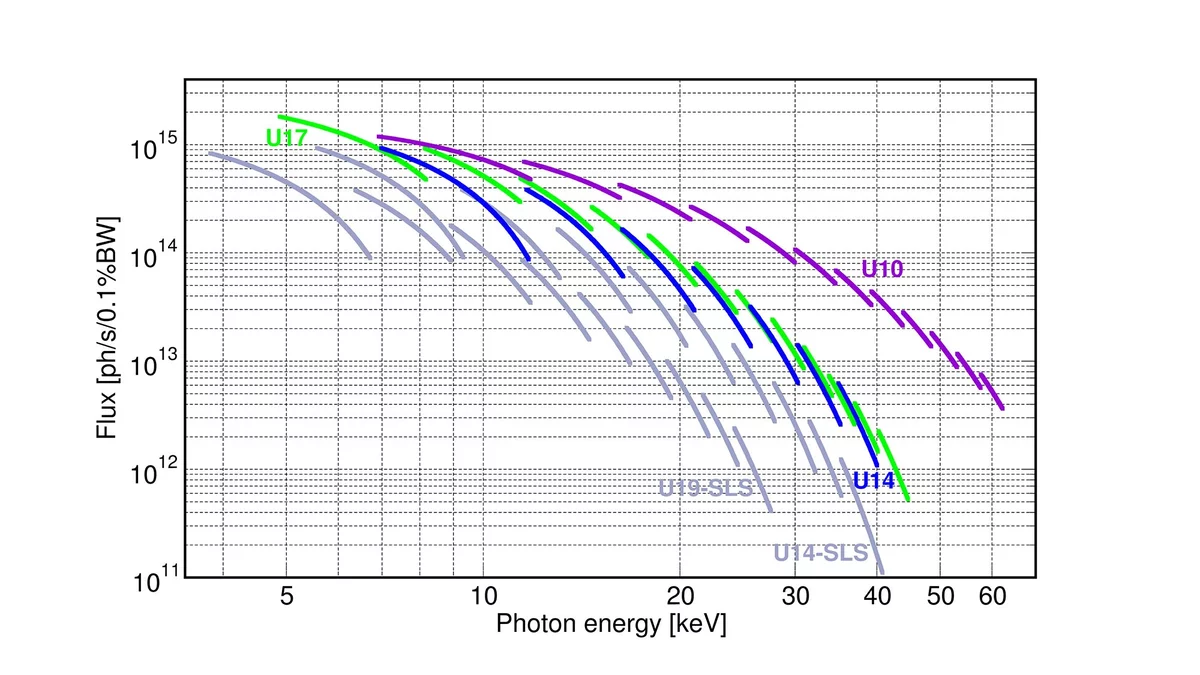The use of PrFeB permanent magnet material in the hard x-ray cryogenic in-vacuum undulators of SLS 2.0 has allowed the design of shorter-period devices with high fields, capable of generating an increase in flux and brilliance, depending on the photon energy, by two to three orders of magnitude.
Moreover, the photon-energy range will be extended from 30 keV to beyond 60 keV by the increase in storage-ring energy and the installation of a 10-mm-period high-temperature superconducting undulator. This R&D project promises a factor of two higher magnetic fields compared to all other available technologies.
The new quasi-on-axis injection concept allows the installation of round vacuum chambers with an 8-mm diameter in the straight sections of the soft- and tender x-ray beamlines. This enables the use of symmetric APPLE X undulators. Developed for SwissFEL, these undulators at SLS 2.0 allow shorter undulator period lengths. Importantly, the higher storage-ring energy combined with this novel technology will mean that the entire soft x-ray range of up to approximately 2 keV can be covered on the fundamental energy range, thus simplifying operation and improving stability.
Moreover, strategies to reduce the high-power densities on-axis of the soft x-ray undulators will be implemented using so-called “knot” magnet arrays, in which the unused higher harmonics are radially shifted away from the central axis and blocked in the front end.
Lastly, the reverse-bend technology of the MBA provides a very small dispersion in the middle of the arcs, meaning that superconducting dipoles with field strengths up to 5 T can be installed without compromising the emittance.
Brilliance and flux curves for the bending magnet (1.35 T) and superbend (both warm, 2.1 T, and superconducting, 3-5 T) beamlines at SLS 2.0.
Brilliance and flux curves for the soft x-ray insertion-device beamlines at SLS 2.0
Brilliance and flux curves for the hard x-ray insertion-device beamlines at SLS.2.0
